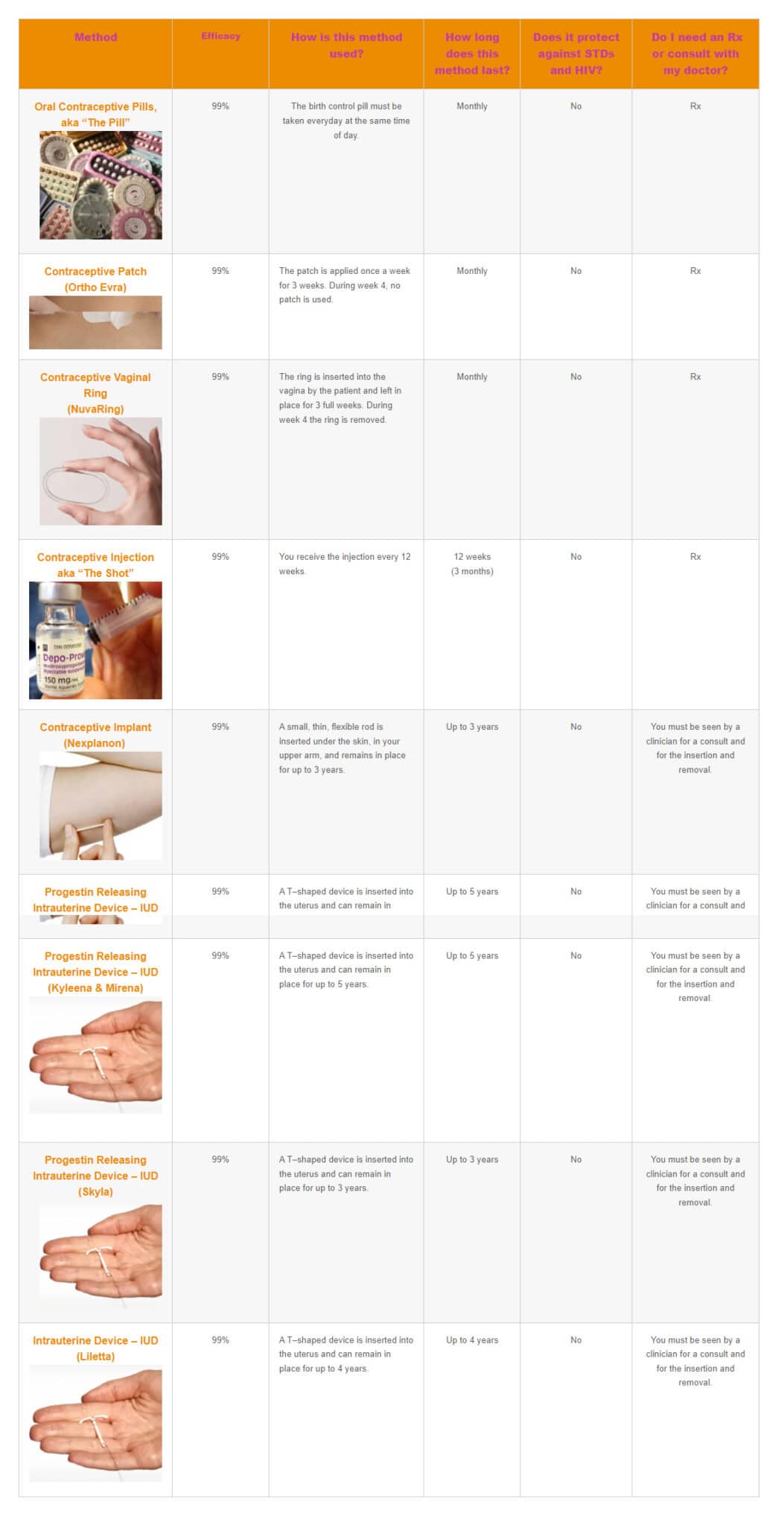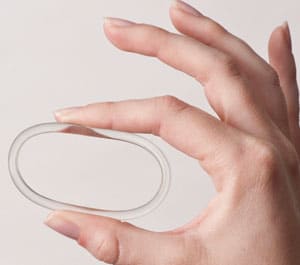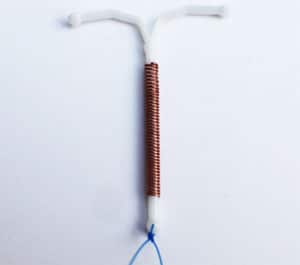Abortion Care Is legal and available in Pennsylvania. Call (484) 821-0821 or click here to request an appointment.
Abortion Care Is legal and available in Pennsylvania. Call (484) 821-0821 or click here to request an appointment.
Abortion Care Is legal and available in Pennsylvania. Call (484) 821-0821 or click here to request an appointment.
Abortion Care Is legal and available in Pennsylvania. Call (484) 821-0821 or click here to request an appointment.
Hormonal birth control methods work by preventing your body from releasing an egg from the ovary. If there is no egg, fertilization cannot occur and you cannot get pregnant. Estrogen and progesterone also work by making the uterus an “unfriendly” place which decreases the chance of fertilization. There are many methods of hormonal contraception and we can help you find the type that is most suitable for your lifestyle.

| Method | Efficacy | How is this method used? | How long does this method last? | Does it protect against STDs and HIV? | Do I need an Rx or consult with my doctor? |
|---|---|---|---|---|---|
Oral Contraceptive Pills, aka “The Pill”
|
99% | The birth control pill must be taken everyday at the same time of day. | Monthly | No | Rx |
| Contraceptive Patch (Ortho Evra)  |
99% | The patch is applied once a week for 3 weeks. During week 4, no patch is used. | Monthly | No | Rx |
| Contraceptive Vaginal Ring (NuvaRing) 
|
99% | The ring is inserted into the vagina by the patient and left in place for 3 full weeks. During week 4 the ring is removed. | Monthly | No | Rx |
| Contraceptive Injection aka “The Shot”  |
99% | You receive the injection every 12 weeks. | 12 weeks (3 months) |
No | Rx |
| Contraceptive Implant (Nexplanon) 
|
99% | A small, thin, flexible rod is inserted under the skin, in your upper arm, and remains in place for up to 3 years. | Up to 3 years | No | You must be seen by a clinician for a consult and for the insertion and removal. |
| Progestin Releasing Intrauterine Device – IUD (Kyleena & Mirena) 
|
99% | A T–shaped device is inserted into the uterus and can remain in place for up to 5 years. | Up to 5 years | No | You must be seen by a clinician for a consult and for the insertion and removal. |
| Progestin Releasing Intrauterine Device – IUD (Skyla) 
|
99% | A T–shaped device is inserted into the uterus and can remain in place for up to 3 years. | Up to 3 years | No | You must be seen by a clinician for a consult and for the insertion and removal. |
| Intrauterine Device – IUD (Liletta) 
|
99% | A T–shaped device is inserted into the uterus and can remain in place for up to 4 years. | Up to 4 years | No | You must be seen by a clinician for a consult and for the insertion and removal. |
Non-hormonal contraceptives prevent pregnancy by providing a barrier against sperm or by interfering with sperm movement. These methods do not use hormones, so they do not interfere with your natural reproductive cycle or menstrual cycle. Non-hormonal birth control is a great option for people who are unable to use hormonal birth control or who prefer not to.
| Method | Efficacy | How is this method used? | How long does this method last? | Does it protect against STDs and HIV? | Do I need an Rx or consult with my doctor? |
|---|---|---|---|---|---|
External Condom
|
97% | A new condom must be used with every sex act. | This method is not permanent. | Yes, when used correctly and consistently. | No. There are a variety of sizes, styles, colors and textures available and can be purchased over the counter. |
Internal Condom
|
95% | A new condom must be used with every sex act. | This method is not permanent. | Yes, when used correctly and consistently. | No. There is currently only one female condom available. |
Diaphragm
|
94% | You must insert your diaphragm prior to intercourse. Fresh spermicides must be applied as well. | This method is not permanent. Diaphragms must be checked or replaced periodically. | Diaphragms do not protect against HIV. There is a mild reduction in the risk of some STDS. | You must be seen by an OBGYN to be fitted for your diaphragm, and taught how to use it correctly. |
Cervical Cap
|
84% effective for people who have had a child, 91% for those who have not. | You must insert your cervical cap prior to intercourse. Fresh spermicides must be applied as well. | This method is not permanent. Cervical caps must be checked or replaced periodically. | No | You must be seen by an OBGYN to be fitted for your cervical cap and taught how to use it correctly. |
| Copper Intrauterine Device – IUD (Paragard) 
|
99% | A T – shaped device is inserted into the uterus and can remain in place for up to 10 years. | Up to 10 years | No | You must be seen by your OBGYN for a consult and for the insertion. |
Spermicides
|
94% | Spermicides work by killing sperm and are to be used with every sex act. | Spermicides should be inserted up to an hour prior to any sex act. | No | No, a variety of spermicidal foams, jellies, and films can be purchased at a pharmacy. |
Tubal Ligation
|
99% | The fallopian tubes are tied, burned, or clamped. It is permanent and irreversible. This procedure is done in the hospital and requires general anesthesia. | This method of birth control is permanent and irreversible. | No | A consult and exam must be done prior to this surgery. This procedure is typically done in the hospital. |
| Method | Efficacy | How is this method used? | How long does this method last? | Does it protect against STDs and HIV? | Do I need an Rx or consult with my doctor? |
|---|---|---|---|---|---|

| 99% | The birth control pill must be taken everyday at the same time of day. | Monthly | No | Rx |
 Contraceptive Patch
(Ortho Evra) Contraceptive Patch
(Ortho Evra) | 99% | The patch is applied once a week for 3 weeks. During week 4, no patch is used. | Monthly | No | Rx |
 Contraceptive Patch
(Ortho Evra) Contraceptive Patch
(Ortho Evra) | 99% | The ring is inserted into the vagina by the patient and left in place for 3 full weeks. During week 4 the ring is removed. | Monthly | No | Rx |
 Contraceptive Injection
aka “The Shot” Contraceptive Injection
aka “The Shot” | 99% | You receive the injection every 12 weeks. | 12 weeks (3 months) | No | Rx |

| 99% | A small, thin, flexible rod is inserted under the skin, in your upper arm, and remains in place for up to 3 years. | Up to 3 years | No | You must be seen by a clinician for a consult and for the insertion and removal. |

Device – IUD (Kyleena & Mirena) | 99% | A T–shaped device is inserted into the uterus and can remain in place for up to 5 years. | Up to 5 years | No | You must be seen by a clinician for a consult and for the insertion and removal. |

Device – IUD (Skyla) | 99% | A T–shaped device is inserted into the uterus and can remain in place for up to 3 years. | Up to 3 years | No | You must be seen by a clinician for a consult and for the insertion and removal. |

| 99% | A T–shaped device is inserted into the uterus and can remain in place for up to 4 years. | Up to 4 years | No | You must be seen by a clinician for a consult and for the insertion and removal. |
